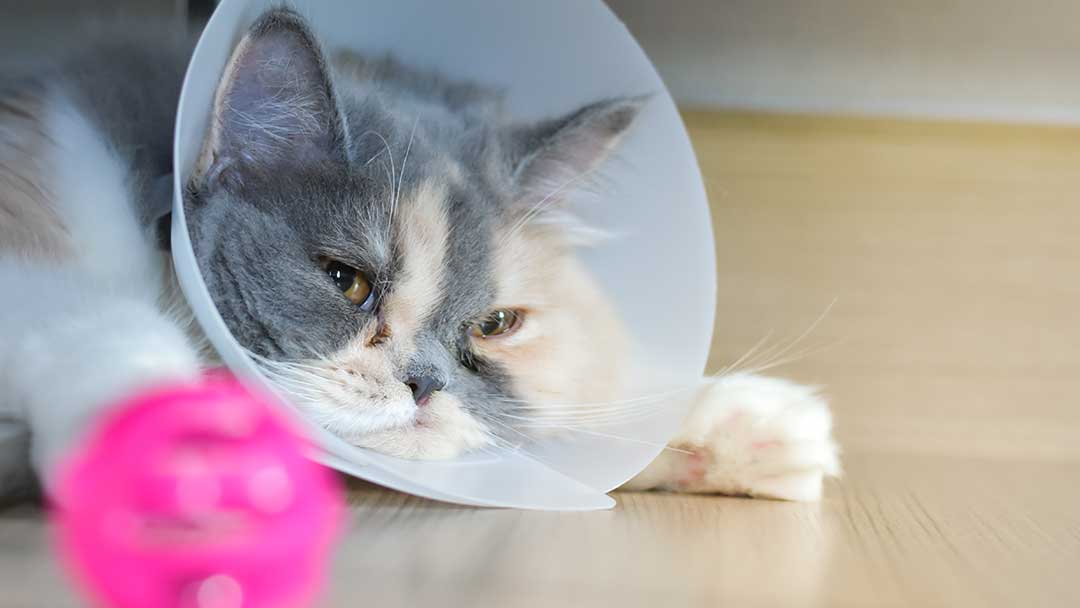
Post-Operative Care for Your Pet
Like people, recovering from a surgery can be an uncomfortable experience for our pets. It’s up to you to care for them after any procedures and aid them throughout the recovery process. However there is no standard procedure for post-operative care for pets. The specifics of your pet’s post-operative care will vary depending on your pet’s age and condition, as well as the type of surgery that was performed.
Most importantly, ensure you give your pet plenty of time to rest and recover. You can follow the tips below for a general guide on post-operative care but if you’re unsure about anything, talk to your vet to figure out the right course of action. Ask them for a written list of specific details regarding your pet’s post-op care and never hesitate to contact them to clarify anything.
Drowsiness
Generally speaking, it’s common for pets to be sleepy and a bit lethargic for the first 12 to 24 hours after surgery as they will be recovering from a general anesthetic or other sedatives. Vets will often give your pet pain relief to help with any soreness. Any drowsiness should subside in a day or two following the operation.
Anesthetics can be administered through an intravenous injection or by inhaled gases. The latter can cause irritation due to the special tube placed in the windpipe to administer it. This can result in a mild cough after surgery which should also pass within 24 hours. If coughing and irritation continues, you should contact your vet.
Restricted Activity
Even the smallest of surgeries are invasive and require time and rest to heal. This often means restricting the amount of activity your pet does to allow any tissue that was cut to heal back together. If your pet moves about too much, there’s a risk of the tissues not bonding properly, increasing the risk of complications like infection or wound breakdown, and adding to the recovery time.
The type of activity restriction a pet will need is dependent on the type of surgery and patient. Smaller incisions (e.g. from small mass removals and neuters) may only require three to seven days of restricted activity. Things get trickier when you have a particularly energetic pet, a long incision or an incision in a high stress area like the ankle or armpit.
Post-Op Medication and Home Care
Antibiotics and pain medication are commonly prescribed to prevent infection and relieve any discomfort. Not all procedures require antibiotics and they are often skipped during short, simple procedures with minimal risk. Some high-energy dogs may also be sent home with sedatives or anti-anxiety medication to help them keep calmer and restrict activity while they heal.
During the post-op period (usually between 10 to 14 days after surgery), check the wound twice a day to ensure it’s clean and dry. Look for any signs of swelling, odour, heat, discharge, irritation, gaping, or self- inflicted damage. If a bandage is required, don’t let it get wet or dirty. Cover the bandage with a plastic bag and secure it with tape if your pet needs to go outside onto dirty ground. However be sure to take it off when they are back inside on a clean surface.
Warm and/or cold compresses might help relieve pain after bone surgeries and large mass removals. Make sure you only do this if instructed by your vet and have them show you how it’s done, how often and low long compresses should be kept on site. Avoid any over-the-counter or home remedies unless your vet thinks it’s acceptable.
If Something Goes Wrong
Your pet may try to chew or lick wounds, which can cause harm and in some cases infection. It’s crucial to intervene as soon as it happens by using an Elizabethan collar (also known as an e-collar or cone of shame). These collars are easy to put on and off, but they should only be removed under your full supervision. Most pets will learn to go about their daily business with the collar in place.
Watch out for signs indicating potential problems such as:
- Lethargy after 24 hours
- Vomiting after 24 hours
- Swelling around the surgery site
- Bleeding from the wound
- Excessive redness around the surgery site
- Discharge (unless your vet has inserted a drain, in which case some discharge over the first few days is normal)